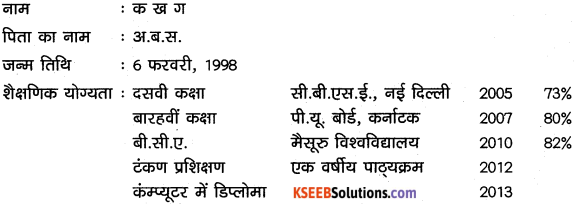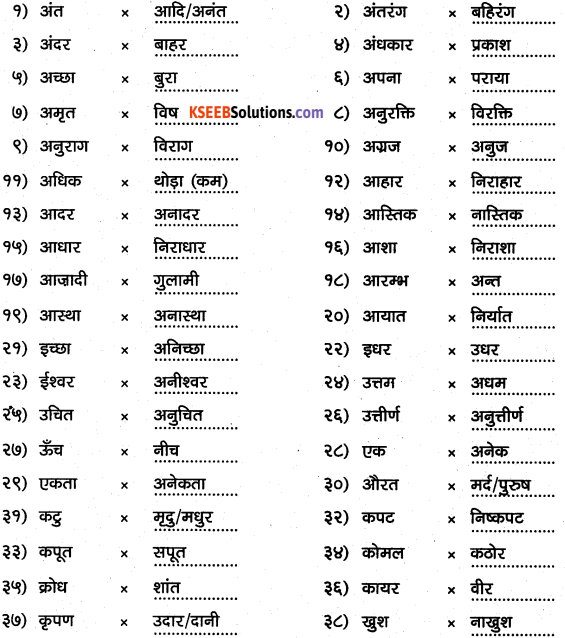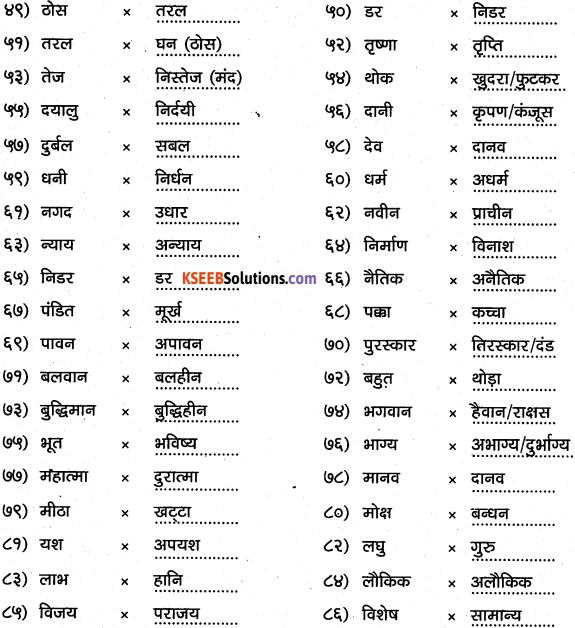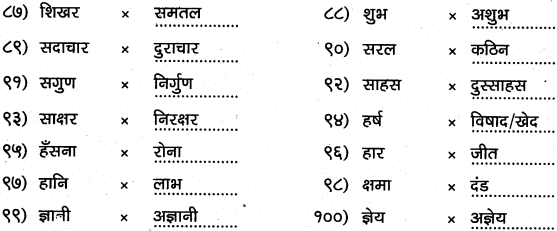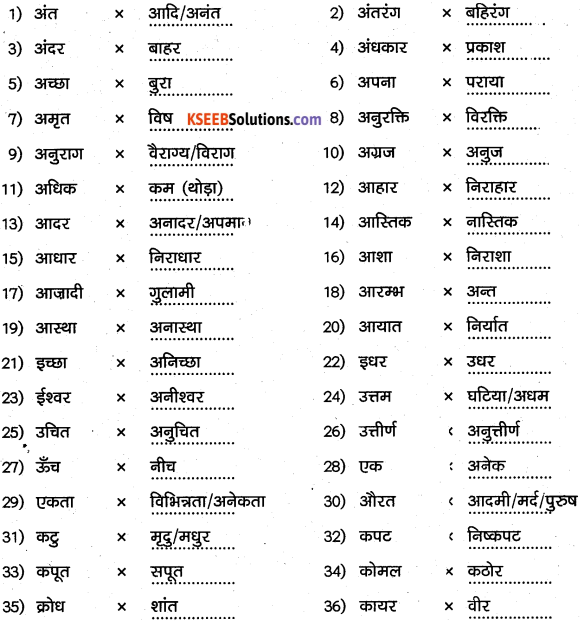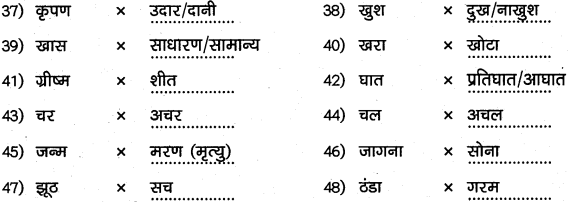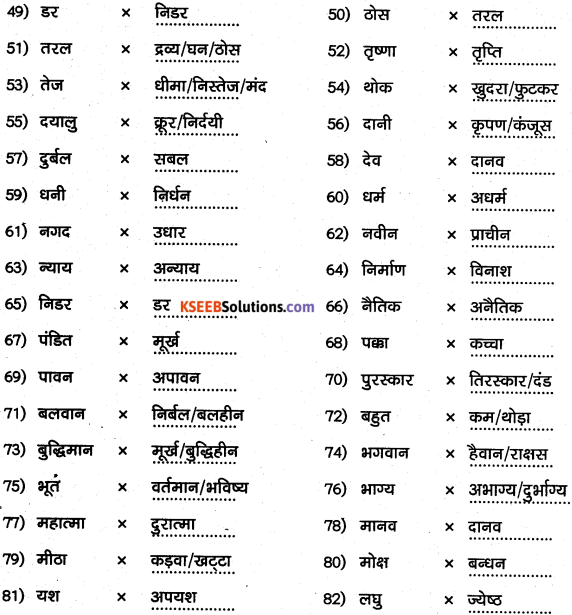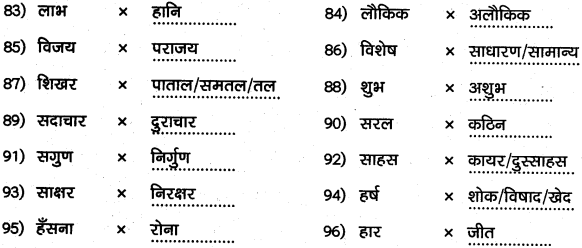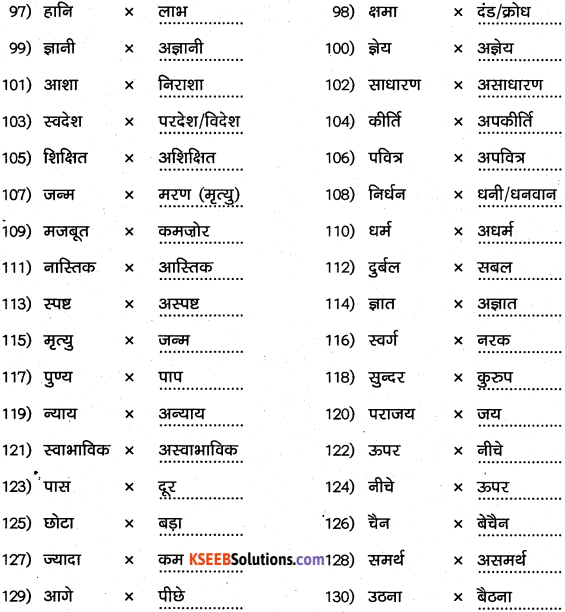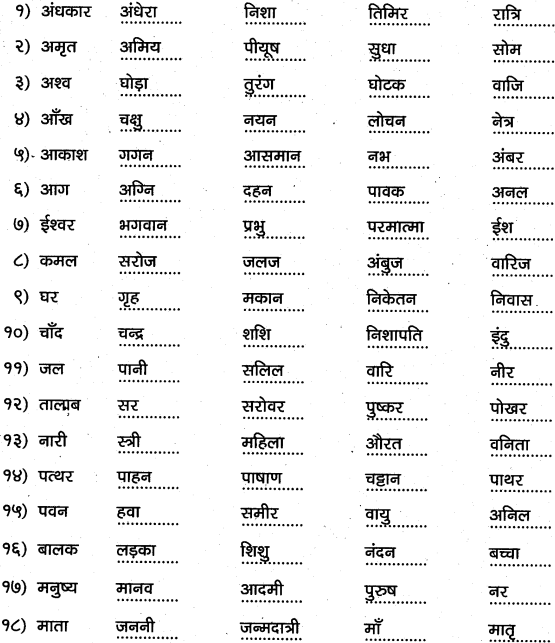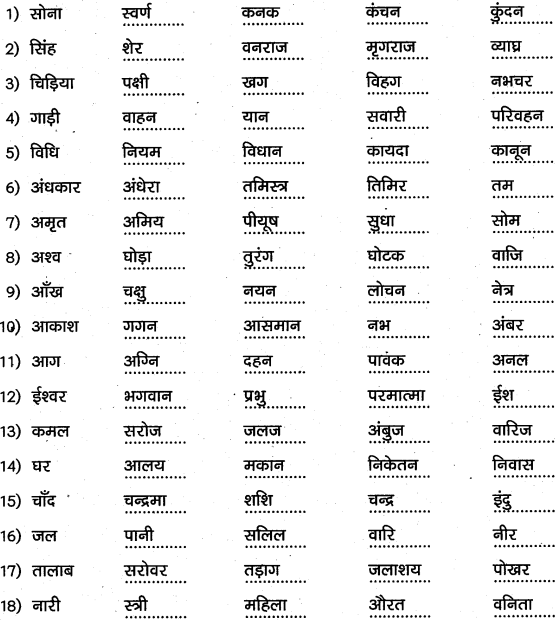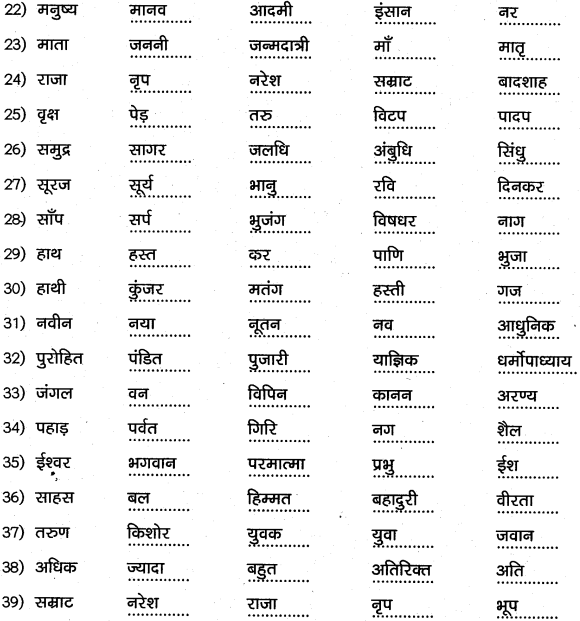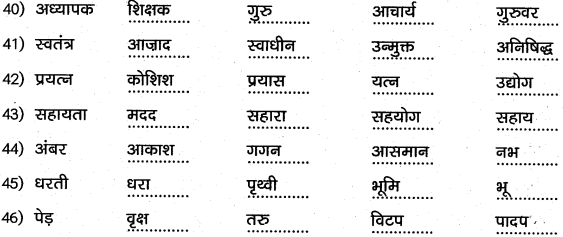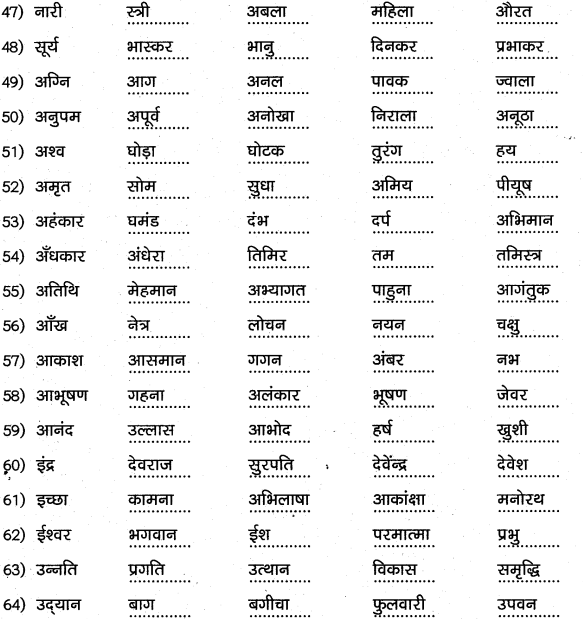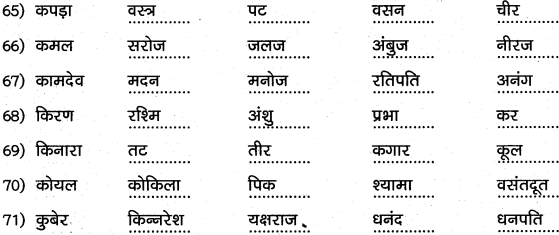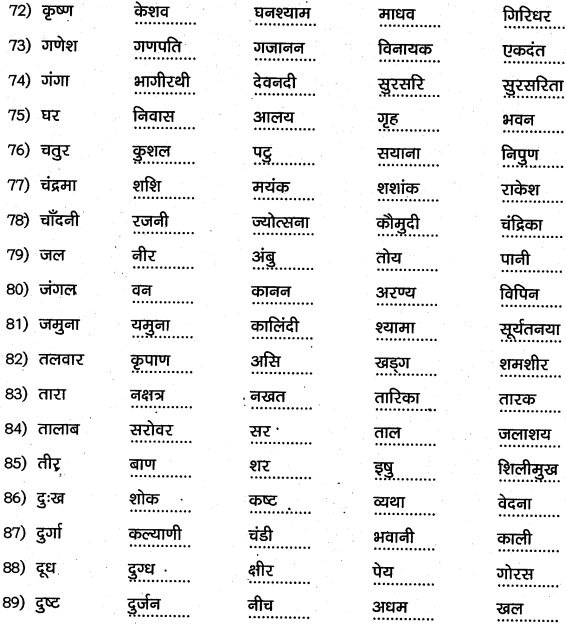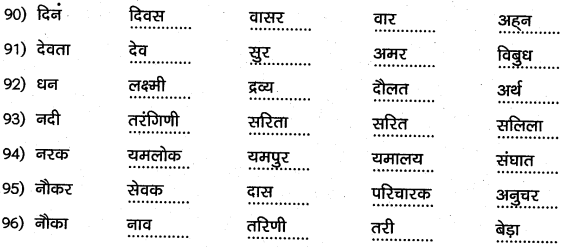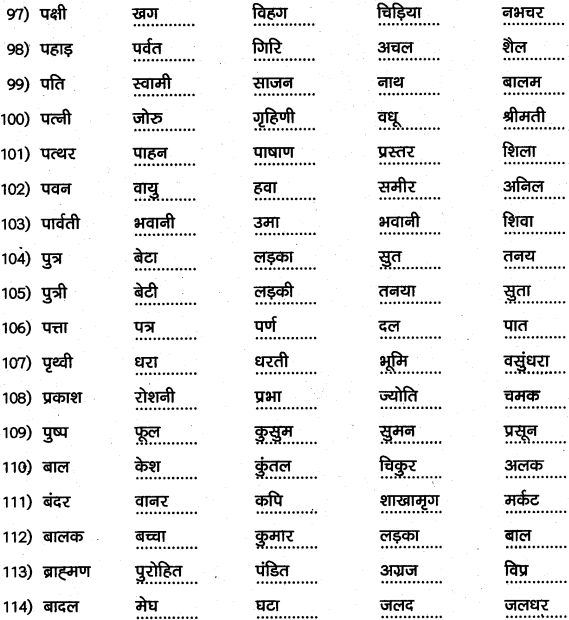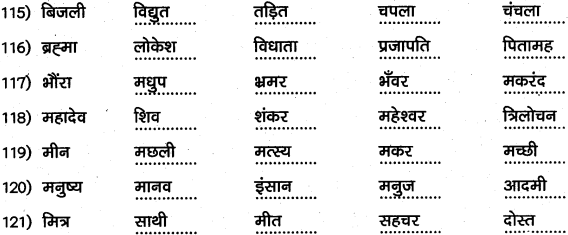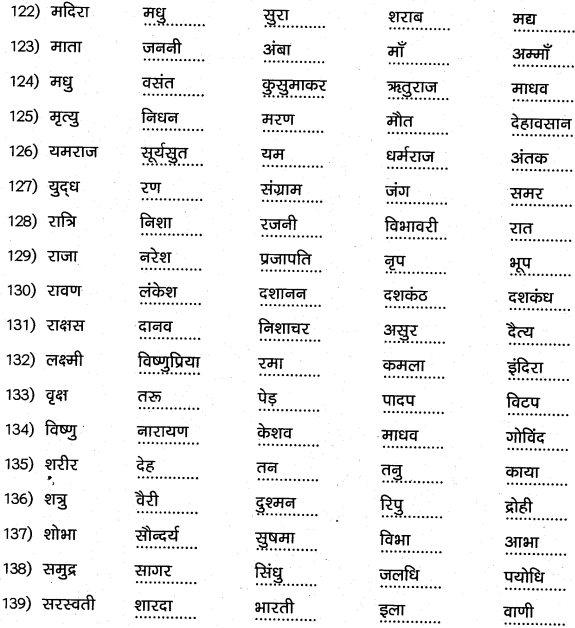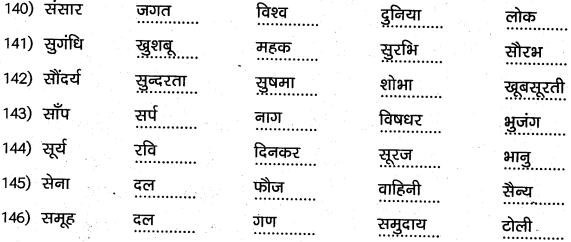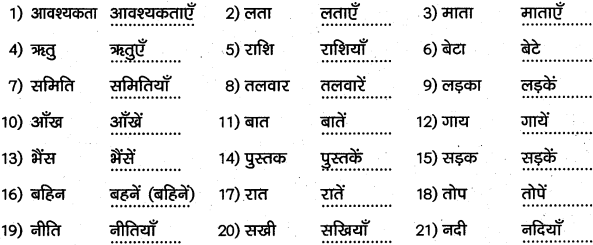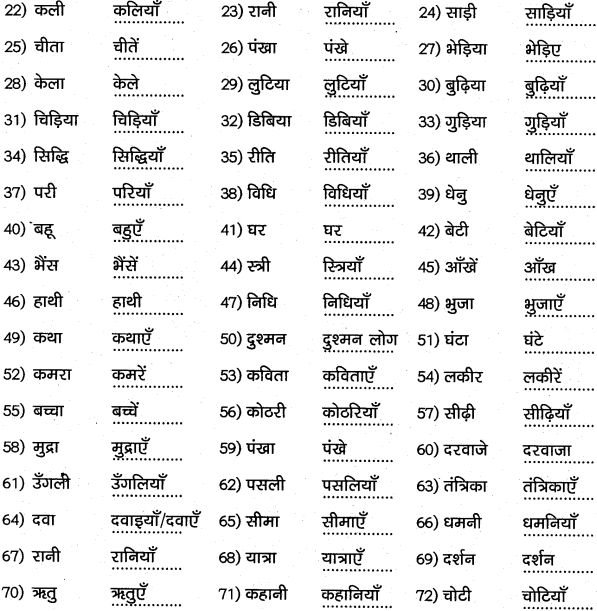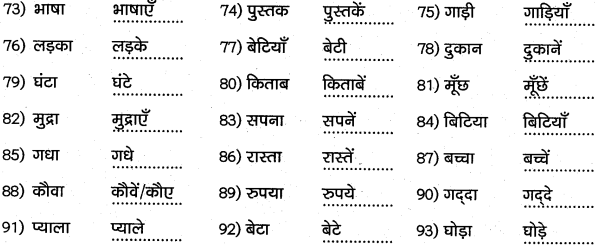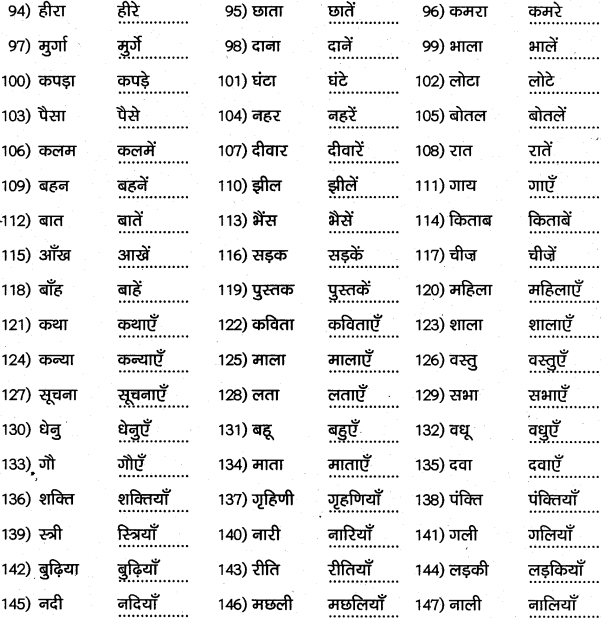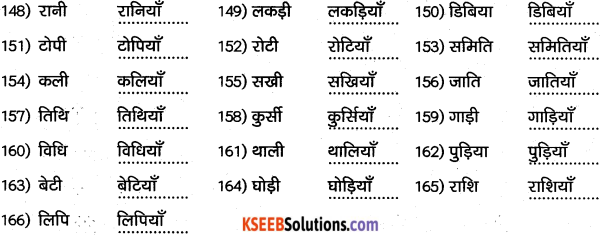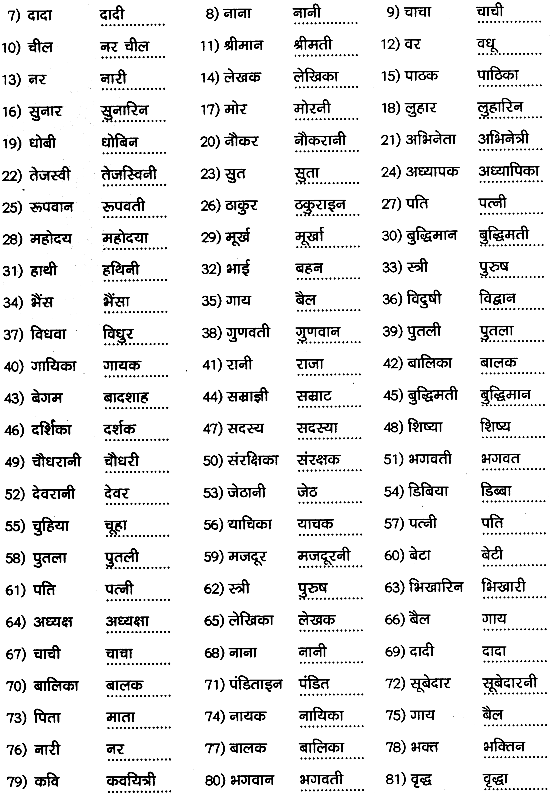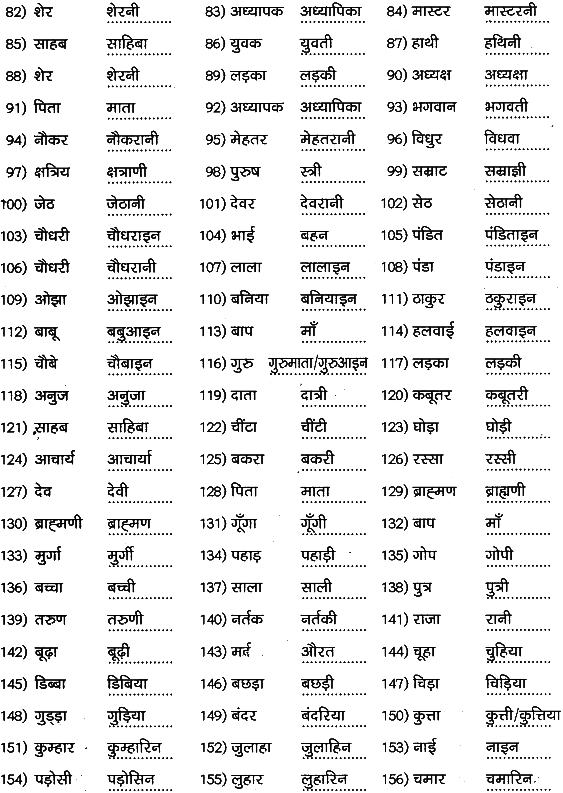You can Download Chapter 9 Democratic Decentralisation Questions and Answers, Notes, 1st PUC Political Science Question Bank with Answers Karnataka State Board Solutions help you to revise complete Syllabus and score more marks in your examinations.
Karnataka 1st PUC Political Science Question Bank Chapter 9 Democratic Decentralisation
1st PUC Political Science Democratic Decentralisation One Mark Questions and Answers
Question 1.
Who is called as lather of local self-government in India?
Answer:
Lord Rippon is called as father of local self-government in India.
Question 2.
Which state implemented local self-government at first in India.
Answer:
Rajastan has first implemented local self-government in India.
Question 3.
Which constitutional amendment act related to Rural local bodies?
Answer:
73rd constitutional amendment act relates to rural local bodies.
Question 4.
Which constitutional amendment act related to Urban local bodies?
Answer:
74th constitutional amendment act relates to urban local bodies.
Question 5.
What is the term of president of Grama Panchayat?
Answer:
The term of the president of Grama Panchayat is 30 months.
![]()
Question 6.
Expand P.D.O.
Answer:
Panchayat Development Officer.
Question 7.
What is the term of president of the Taluk Panchayat?
Answer:
The term of the president of Taluk Panchayat is 20 months.
Question 8.
What is the tenure of Zilla Panchayat?
Answer:
5 Years.
Question 9.
What is the term of president of the Zilla Panchayat?
Answer:
The term of the president of Zilla Panchayat is 30 months.
Question 10.
Who is the administrative chief of the Zilla Panchayat?
Answer:
Chief Executive Officer.
Question 11.
Expand BBMP.
Answer:
Bruhat Bangalore Mahanagara Palika.
Question 12.
What are the qualifications and tenure of Mayor?
Answer:
To be elected as a Mayor, first of all, he must be one of the councillors. He is elected as mayor for a period of 1 year only.
Question 13.
Who is the administrative officer of City Corporation.
Answer:
Corporation Commissioner.
![]()
Question 14.
How many members are nominated to Mahanagara Palika?
Answer:
5 members are nominated.
Question 15.
How many Mahanagar Palike are there in Karnataka.
Answer:
Bangalore, Mysore, Mangalore, Belgaum, Gulbarga, Bellary, Davangere, Hubii, Bharward.
Question 16.
What is local self-government?
Answer:
It is the government of locality. Its main objective is to facilitate the participation of the people in the developmental activities of their locality.
Question 17.
What is Panchayat Raj?
Answer:
It is multi-functional, multi-purpose organisational system. It is the outcome of democratic decentralisation.
Question 18.
Name the three stages of Local self-government.
Answer:
- Village Panchayat.
- Panchayat Samiti
- Zilla Parishad.
Question 19.
Who is the Municipal Commissioner?
Answer:
He is the Chief Executive Officer of the Municipal Corporation. He is directly appointed by the Government.
![]()
Question 20.
What is Zilla Panchayat?
Answer:
It is constituted for each district. It has jurisdiction over the entire district.
Question 21.
Bring out the differences between Town Municipalities and City Corporations.
Answer:
Municipalities are located in urban areas whereas city corporations exists in metropolitan areas. Corporations are independent bodies whereas town municipalities are subject to the Council of Government.
Question 22.
Who is called as head of City Corporation?
Answer:
Mayor.
Question 23.
How many corporations are there in Karnataka?
Answer:
Eight corporations.
Question 24.
What is the term of Gram Panchayat?
Answer:
5 years.
Question 25.
Who proposed the Gram Rajya?
Answer:
Mahatma Gandhi.
Question 26.
Name the 3 tier of Panchayat raj system.
Answer:
Zilla Panchayat, Taluk Panchayat and Gram Panchayat.
Question 27.
What is the term of Gram Panchayat?
Answer:
A village or group of villages having a population of not less than 5,000 but not more than 7,000 is called Gram Panchayat. The power to declare an area as a Gram Panchayat rests with the Assistant Commissioner.
Question 28.
Name the administrative officer of Gram Panchayat.
Answer:
Secretary.
![]()
Question 29.
What is a corporation?
Answer:
Corporations are established in big cities like Bangalore, Mysore, Hubli-Dharwar, Davanagere. Elected members from different wards in the city known as councilors or corporators form the corporation.
Question 30.
Who is a councilor?
Answer:
The elected members of corporation are called Councilors.
Question 31.
What is a ward?
Answer:
For the purpose of election, people of the city are divided into various wards and the representatives of each ward form the corporation, who are also known as councilors.
Question 32.
Who is called first citizen of a city corporation?
Answer:
Mayor.
Question 33.
Who elects the members of City Corporation?
Answer:
They are directly elected by the people.
Question 34.
What is the term of city municipality?
Answer:
5 years.
![]()
Question 35.
Name the administrative officer of city municipality.
Answer:
Chief officer.
Question 36.
Who elects the members of town municipality?
Answer:
They are directly elected by the people.
Question 37.
What is the term of town municipality?
Answer:
5 years.
Question 38.
Name the administrative officer of town municipality.
Answer:
Chief Officer.
Question 39.
What is local government?
Answer:
It is as governmental machinery established by the people in a locality to administer the affairs of a local area.
Question 40.
What is Zilla Panchayat?
Answer:
There shall be a Zilla Panchayat at every distirct level and a member for a population of every 40,000.
Question 41.
Who elects the members of Zilla Panchayat?
Answer:
The members are directly elected by the people.
Question 42.
What is taluk Panchayat?
Answer:
There shall be a taluk Panchayat for a population not exceeding one lakh. It shall have minimum 11 members. Each member representing a population of one thousand.
Question 43.
Who elects the members of taluk Panchayat?
Answer:
The members are directly elected by the people.
![]()
Question 44.
What is a corporation?
Answer:
City corporations are established in big cities according to the acts of state legislature.
Question 45.
Name the political head of corporation.
Answer:
Mayor and Deputy Mayor.
Question 46.
Name the administrative head of corporation.
Answer:
Corporation Commissioner.
Question 47.
What is a Town municipality?
Answer:
There are municipalities established in cities and towns. If the population exceeds 20,000 but less than 50,000 it is called Town municipality.
Question 48.
Name the political head of Town municipality.
Answer:
President and vice president.
Question 49.
What is a City Municipality?
Answer:
If the population is more than 50,000 and less than 39,000, it is called a City Municipality.
Question 50.
Name the political head of City Municipality.
Answer:
President.
Question 51.
What is the role of the Deputy-Mayor?
Answer:
The Deputy Mayor discharges the duties of Mayor in case of absence, due to resignation, death, incapacity (exceeding 8 days) or the Deputy Mayor also performs the tasks assigned to him by the mayor.
1st PUC Political Science Democratic Decentralisation Two Mark Questions and Answers
Question 1.
What is democratic decentralization?
Answer:
Distribution of constitutional powers from union level to village level is called democratic decentralization.
![]()
Question 2.
Name the three stages of Local self-government according to the Balwant Roy Mehta committee.
Answer:
- Village Panchayat
- Panchayat Samiti
- Zilla Parishad
Question 3.
Where and When the Panchayat Raj System came in to force?
Answer:
The Panchayat Raj system has first came into base on 2nd October 1959 at Rajastan.
Question 4.
What is the importance of 73rd and 74th constitutional amendment?
Answer:
73rd constitutional amendment Act deals with the rural local bodies and 74th act relates to urban local bodies.
Question 5.
What is Local self-government?
Answer:
Local self-governments are the administrative units which are created by the statutory law to meeth the local needs fastly and effectively.
Question 6.
Which are the three stages of Rural Local self-government?
Answer:
- Village Panchayat
- Panchayat Samiti
- Zilla Parishad
Question 7.
Who elects the President and Vice president of Grama Panchayath?
Answer:
The president and vice president elected by the members of Grama Panchayath, President(Adhyaksha) presides over the meetings. In the absence of President, Vice president (Upadhyaksha) presides over the meetings.
Question 8.
Who will cast the vote in the election of president and vice president of Taluk Panchayat?
Answer:
Members of Taluk Panchayat cast their votes.
Question 9.
Who elects the president of Zilla Panchayat?
Answer:
Members of Zilla Panchayat elects.
![]()
Question 10.
Name the standing committees of Zilla Panchayat.
Answer:
- General committee.
- The fiance, Auditing and planning committee.
- Social justice committee.
- Education and health committee.
- Agricultural and Industry committee.
Question 11.
Name any two Mahanagar Palike or Corporations.
Answer:
Bangalore, Mysore, Mangalore, Belgaum, Gulbarga, Bellary, Davangere, Hubli, Bharward.
Question 12.
Who elect Mayor.
Answer:
Corporator elects Mayor.
Question 13.
What are the types of local self-government?
Answer:
Gram Panchayat at village level, Taluk Panchayat at Taluk level and Zilla Panchayat at district level.
Question 14.
What is Panchayat Raj?
Answer:
It is the system of administration in which the village people are given the right to manage their own local affairs and to satisfy their needs themselves.
Question 15.
Who is the main municipal authority?
Answer:
- The Corporation or the General Council.
- Standing Committees.
- The Commissioner.
Question 16.
Mow the expenses are met in a Municipal Corporation?
Answer:
Every Municipal Corporation will have its own fund known as Corporation Fund. All incomes are deposited on these fund and all payments are made out of this fund.
![]()
Question 17.
Mention the standing committees of Corporation.
Answer:
- Standing Committee for taxation and finance.
- Standing Committee for Public Health.
- Standing Committee for Public Works.
Question 18.
Which are the sources of income of City Corporation?
Answer:
- Profession, fairs, festivals.
- Rent from its land and property.
Question 19.
Name the Standing Committee of Gram Panchayat.
Answer:
- Social Justice Committee
- Amenities Committee
- Production Committee
1st PUC Political Science Democratic Decentralisation Five Mark Questions and Answers
Question 1.
Explain the meaning and importance of Democratic decentalization system.
Answer:
Distribution of constitutional powers from union level to village level is called democratic decentralisation
The importance of local governments is so paramount that it is called the “Primary school of democracy”.
1. Welfare state:
Modern states are welfare states. If the overall development of the state is to take place; the development of local governments is very vital. Because national progress can’t be divorced from rural progress.
2. Cradle of Democracy:
A citizen, not aware of the working of democracy is a burden on the nation. In local governments, people are introduced to functioning of democracy step by step and over a period of time they learn the nuances of democracy. Democracy can survive only when majority of the masses living in rural areas participate. That’s why local governments are called “cradles of democracy”;
3. Power to the People:
The other name of local government is power of the people; the local governments take power to the doorsteps of the people and empower them not only identify problems but also to solve them.
4. Knowledge of Administration:
Local governments aim at imparting knowledge of administration to locals, though the local people are aware of the government, they are not aware of the working of administration. But when interacted with officials, due to proximity, they get working knowledge of administration.
5. Local Solutions:
The basic principle of local government is, local problems must be solved at the local level. The centre or state government can’t understand local problems due to paucity of time, interest and information. But locals can, based on experience, identify suitable solutions to problems.
![]()
Question 2.
Explain the 73rd constitutional amendment Act.
Answer:
The 73rd constitutional amendment act which came in to force on 1993 can be explained its provisions as below:
- 73rd constitutional amendment act provides reservation to SC, ST, Backward class women.
- The Panchayats can mobilize their revenue sources.
- Elections should be need within 6 months.
- The power to constitution of committees is rests with the state government.
- Members of parliament and assembly are enjoying the membership in Panchayats.
- The members of Panchayats have to elect by the elections.
- The age limit to contest the election is fixed to 21 years.
- The state election commission is the authority to conduct the elections.
- The Panchayats have power to impose tax.
- State finance commission has been established to review the finances of Panchayats.
- Panchayats can prepare and enforce the plans for economic and social development.
Question 3.
plain 74th constitutional amendment Act.
Answer:
The 74th constitutional amendment act which came into effect in 1993 can be explained as its provisions as below.
- The state government can conduct the elections.
- It ensures a firm relation between state government and urban local bodies with regards to taxation powers and revenue sharing.
- It provides adequate reservation facilities to SG, ST, Backward class and women.
- The state government has power to legislate about reservation in urban local bodies.
- The members should elect directly by the residents who are living in urban area.
- The tenure of the urban local bodies in 5 years.
- Elections shall be held within 6 months from the date of dissolution.
- Members of parliament and assembly are the ex-officio members of urban local bodies.
- The state government can nominate 5 members to the urban local bodies.
- The state government has power to prepare plan for economic and social development.
- State finance commission has been established to review the finances of urban local bodies.
Question 4.
Explain the constitution of Gram Panchayath.
Answer:
There is a Grama Panchayat at the village level, A Taluk Panchayat at the taluk level. There will be direct elections to all house levels. Reservation of seats for SC’s and ST’s according to their population. All Adhyakshas can be members of Zilla Panchayats, MPs and MLA’s can be members of both Zilla and Taluk Panchayat.
Question 5.
Write the composition of Taluk Panchayat or Explain the constitution of Taluk Panchayat.
Answer:
As per Karnataka Panchayat Act of 1993, the Grama Panchayats are constituted in the following manners.
- There shall be one member for the Grama Panchayat for every population of 400.
- 1/3 of total members of Gram Panchayats shall be from the backward classes and women.
- 15% of total seats in Gram Panchayat shall be reserved for SC’s and STs.
- The Government Officers conduct Panchayat electons. All the citizens whose names are there in the electoral roles are eligible to vote.
Question 6.
Explain the standing committees of Gram Panchayat.
Answer:
To look at the functions of Gram Panchayat there are 5 standing committees, they are:
- Committee on Productivity
- Committee on Social Justice
- Committee on Services
Each committee consists of 5 members elected among them. No member can be in two committees at a time. Social justice committee must consist of one woman, one SC, and one ST member.
Question 7.
Explain the constitution of Mahanagara Palika.
Answer:
Corporations are constituted as per Karnataka Muncipal Corporation Act-1976. Wards are created on the basis of city population. A population exceeds more than 3 Laks can be called as Corporation. The members are called as corporators and elected by the city residents for a period of 5 years. Some seats are reserved for SC/ST, OBC, and Women. State government nominates 5 members to the corporation from different field. The MP’s and MLA’s in that jurisdiction are also the members of corporation and can attend the meetings with voting right. The Mayor elected by the Corporators presides over the meetings. The state government appoints administrative head as a commissioner from the IAS cadre. The meetings are held once in two months.
![]()
Question 8.
Explain the standing committees and financial sources of Pura Sabha.
Answer:
The Standing committees of Pura Sabha are
- Taxation, Finance and Appeal committee.
- Basic health, Education and Social justice committee.
- Tour planning and Improvement committee.
- Accounts and Audit committee.
Financial Sources
- Taxes on assets, water, professions, and advertisements.
- Rents from markets, complexes, and other properties.
- Grants and contributions from the State government.
- Income collected for providing drainage and sanitary facilities.
- Loans raised from the public with government approval.
Question 9.
What are the essential conditions for the access of focal self-government?
Answer:
- Local self-governing bodies can work successfully under the Mowing conditions.
- Absence of wide economic disparities .among the members of these communities.
- The bodies must have adequate financial resources available to them. Ethnic homogeneity in their membership is another condition for their success.
Question 10.
Write any 3 merits of local self-government.
Answer:
- There is administrative convenience when the administration is looked after by the local self-govt. Local people can understand and manage local affairs better than the govt.
- This would help to solve the local problems quickly and easily.
- It brings administrative efficiency and economy in administration. The local people can deal with these matters efficiently spending less money.
Question 11.
Write any 3 demerits of local self-government.
Answer:
- Under this, people develop narrow loyalty for their city, town or district.
- Most local governing institutions are dominated by a few local leaders.
- Divided responsibility is one more demerit of local self-government. The responsibilities are divided between the government and local bodies.
Question 12.
What are the reasons for the decline of Panchayat Raj?
Answer:
- Increasing tendency towards centralisation on the part of both central and state government.
- Meagre resources available to the Panchayats.
- Corruption and inefficiency in the working of the Panchayat Raj institutions.
- Domination of economically and socially forward classes.
Question 13.
Write briefly on Mayor of Corporation.
Answer:
Mayor is head of the Municipal Corporation. It is an elected post. He is elected by the members of Corporation, at its first meeting after the general election of councillors. This term is for one year. He has the power to give directions to Municipal Commissioner.
Question 14.
Write briefly on Municipal Commissioner of the Corporation.
Answer:
Municipal Commissioner is appointed by the State Government in consultation with the Mayor. He is normally appointed for the term of 5 years. The Executive Powder of Corporation is vested in the Commissioner. He is the custodian of all the records and its Standing Committees.
Question 15.
Examine the finances of Grama Panchayat.
Answer:
Grama Panchayat will receive an annual grant of one lakh rupees for developmental activities. The Grama Panchayat levy taxes on buildings and lands, may level water rate. It may also levy a tax on entertainment, vehicles, advertisement and boardings fee on buses, etc.
Question 16.
Write a note on Balwanth Rai Mehta committee.
Answer:
The Balwanth Rai Mehtha Committee was established in 1956 to suggest ways and means to strengthen the local government system in India. The committee submitted its report in 1957 in which it suggested a three-tier Panchayat Raj System with Village Panchayat at the village level, Taluk Panchayat at the Taluk level and Zilla Panchayat at the district level. It also advocated decentralization of power and participation of locals on local matters. To realize the dream of Panchayat raj system in India, Rajasthan and Karnataka states implemented the Panchayat raj system.
Question 17.
Write a note on Ashok Mehta committee.
Answer:
The Ashok Mehta Committee was established in 1977. The committee submitted its report in 1978 in which it nearly made a hundred recommendations, some of which are listed as follows: decentralization of powers, taxing power to Panchayat institutions, participation of political parties in Panchayat system, protection to weaker sections and a two-tier Panchayat raj system.
![]()
Question 18.
What are the functions of the president of Zilla Panchayat?
Answer:
Powers of the President:
- To call, preside and conduct the meetings of Zilla Panchayat.
- Implement decisions of Zilla Panchayat through supervision and control.
- The president may sanction to the tune of Rs. 1,00,000 in case of natural claims subjects to the approval of Zilla Panchayat.
- In case of his absence due to resignation, removal or death, the responsibilities are looked after by the Vice president.
Question 19.
What are the functions of the president of taluk Panchayat?
Answer:
Powers of President:
- To call, preside and conduct the meetings of Taluk Panchayat. Implement the decision of Taluk Panchayat through supervision and control.
- The president may sanction to the tune of Rs. 25,000 in case of natural claims subjects to the approval of Taluk Panchayat.
- In case of his absence due to resignation, removal or death, the responsibilities are looked after by the vice president.
Question 20.
Name the standing committees of Taluk Panchayat.
Answer:
Standing Committees:
To look after the functions of Taluk Panchayat there are 3 standing committees, they are
- General Committee.
- Committee on Finance Accounts and Planning.
- Committee on Social Justice.
Each committee consists of Selected members among them. No member can be in two committees at a time. The president of Taluk Panchayat will be the chairman of General Committee and Committee on Finance Accounts and Planning. For Committee on social Justice Committee, members elect the Chairman among themselves.
Question 21.
What are the functions of the president of Gram Panchayat?
Answer:
Powers of President:
- To call, preside and conduct the meetings of Gram Panchayat.
- Implement the decisions of Gram Panchayat through supervision and control.
- In case of his absence due to resignation, removal or death, the responsibilities are looked after by vice president.
Question 22.
What is the role of the mayor?
Answer:
The Mayor, the first citizen of the city holds a position of honour and prestige. The following are the functions of Mayor:
- To preside over the council meetings and conduct it smoothly.
- Exercise administrative control over the secretariat of General council
- To direct the Corporation commissioner to implement the decisions taken by the General council.
- He may call for records relating to city corporation administration.
- Mayor may call for a special meeting of the General council on request by councilors with a requisite majority.
Question 23.
What are the functions of the president of a city/town municipality?
Answer:
The President is the political head of the town or city municipality. He is responsible for smooth conduct of proceedings. The functions of the president are as follows:
- To preside over the council meetings and conduct it smoothly.
- Exercise administrative control over the municipality.
- To direct the Chief municipal officer to implement the decisions taken by the meeting.
- He may call for any records relating to city municipal administration.
- President may call for a special meeting of the General council on request by councilors with a requisite majority
Question 24.
What is the purpose of establishing standing committees?
Answer:
Each standing committee has clearly defined functions. This is to ensure efficiency and specialization. Committee on taxation and finance deals with matters relating to taxes and finance. The Committee on Public health, education, and social justice concern itself with matters relating to health, education and social justice. Issues concerning planning and development of city are taken care of by the committee on city planning and development. The crucial responsibility of auditing, income and. expenditure and protecting the public money lies with the committee on accounts.
Each standing committee consists of members. Members of each committee are appointed on the basis of proportional representation through single non-transferable vote. No member can be in more than one committee. The President of the committee is appointed by members from among themselves.
Question 25.
Mention the financial sources of Zilla Panchayat.
Answer:
Finances:
The financial need of Zilla Panchayat is met through the following sources.
- Funds transferred from the central reserved funds.
- Income earned through imposing taxes and collecting penalties.
- Income earned by way of rent and sale of Zilla Panchayat property.
- Interest earned on loans given by the Zilla Panchayat.
Question 26.
Mention the financial sources of Taluk Panchayat.
Answer:
The financial need of Taluk Panchayat is met through the following sources.
- Funds transferred from the central reserved, funds
- Income earned through imposing taxes and collecting penalties.
- Income earned by way of rent and sale of Taluk Panchayat property.
- Interest earned on loans given by the Taluk Panchayat.
Question 27.
Mention the financial sources of Gram Panchayat.
Answer:
The financial need of the Gram Panchayat is met through the following sources.
- Funds transferred from the central reserved funds.
- Income earned through imposing taxes and collecting penalties.
- Income earned by way of rent and sale of Gram Panchayat property.
- Interest earned on loans given by the Gram Panchayat.
Question 28.
Name the standing committees of Zilla Panchayat.
Answer:
To look after the functions of Zilla Panchayat there are 5 standing committees, they are
- General Committee.
- Committee on Finance, Accounts, and Planning.
- Committee on Social Justice.
- Committee on Education and Health.
- Committee on Agriculture and Industry.
Each committee consists of 5 elected members. No member can be in two committees at a time. The President of Zilla Panchayat will be the Chairman of General committee and Committee on Finance Accounts and Planning. For Committee on Social Justice, Committee on Education and Health and Committee on Agriculture and Industry members elect the chairman among themselves.
1st PUC Political Science Democratic Decentralisation Ten Mark Questions and Answers
Question 1.
Discuss the functions of Gram panchayat.
Answer:
Functions of gram panchayat.
- Formulate plans for the development of Gram panchayat.
- Preparation of Budget of Gram panchayat.
- Collection and maintenance of necessary information and statistics relating to the panchayat.
- Provide relief during natural calamities like floods, famine or earthquakes.
- Encouragement to agriculture.
- Encouragement and development of poultry and pisciculture.
- Support to khadi and cottage industries.
- Protection of public health and support family welfare programmes.
- Encouraging rural housing by providing houses and sites to weaker sections.
- Promote cleanliness through underground drainage system.
- Provide drinking water and prevent water pollution.
- Construction and maintenance of roads, buildings, and bridges.
- Rural electrification.
- Encourage primary and higher education.
- Support and implement poverty alleviation programmes.
- Support adult education and informal education.
- Construction and maintenance of libraries and reading rooms.
- Regulation of market and fairs.
- Strive for the welfare of women and children.
- Strive for the welfare of weaker sections.
- Preservation of Public distribution system
- Maintenance of public gardens and stadiums.
- Maintenance of graveyards.
- Strive and support welfare of physically challenged (handicapped) and mentally retarded.
- Function as per directed by Panchayat Raj Act from time to time.
Question 2.
Explain the functions of Taluk Panchayat.
Answer:
The powers and functions of Taluk Panchayats are as below:
- Preparation of annual plans and submit to Z.P.
- Preparation of annual budget and report to Z.P.
- Providing basic felicities to victims of natural calamities.
- Promotion of agriculture and horticulture.
- Ensuring overall development of the Taluk.
- Constrictions and maintenances of roads, bridges, and buildings
- Promotes poverty alienation programmes, literacy programmes.
- Development of primary and secondary education.
- Promoting the welfare of women children and physically handicapped.
- Providing electric and water felicities.
- Promoting animal husbandry, poultry and fisheries.
- Promoting the welfare of SC, ST and backward class.
- Regulating the markets in rural areas.
- Conducting health and family welfare programmes.
- Encouraging small irrigation programmes.
Question 3.
Explain the functions and constitution of Zilla panchayat
Answer:
Zilla panchayats are constituted in Karnataka at a district level to look after the development of the district. According to Karnataka Panchayat Raj Act 1993 the number of members will be decided on the basis of population of the district. For every 40,000 population is represented by one member. The members are directly elected by the voters for a period of 5 years.
Functions of Zilla panchayat:
Zilla panchayat is the nodal point of all developmental activities of the district.
Following are the functions of Zilla panchayat:
- Supervision co-ordination, direction and integrating development work at the district level.
- Conservation and development of agriculture and horticulture.
- Land development and soil conservation.
- Building and conservation of irrigational works.
- Encourage animal husbandry, dairy development, and poultry.
- Encourage rural cottage industries.
- Construction of district roads, buildings, and other communication facilities .
- Support small-scale industries.
- Establishment and maintenance of Public distribution system (PDS)
- Electrification of rural areas.
- Encourage co-operative activities.
- Implementation of health and family welfare programmes.
- Establishment and maintenance of primary and high schools.
- Planning and supervision of poverty alleviation programmes.
- Encourage rural cottage industries.
- Take up any work as directed by the state government under Panchayat Raj Act.
Question 4.
Explain the powers and functions of Mahanagara Palika.
Answer:
Functions of corporation:
The functions of corporation may be broadly classified into 3 groups:
- General functions
- Compulsory functions
- Optional functions
1. General functions:
The 1976 Act stipulates certain general functions to the corporation. These functions are routine in nature.
- Management of administration of the corporation
- Preparation of budget
- Seek approval of budget
2. Compulsory Functions:
The corporation is duty bound to perform certain functions designated as compulsory. The following are the compulsory functions of corporation.
- Construction and conservation of public roads and streets.
- Providing electricity to public roads, streets, and markets
- Making arrangements for conservancy, drainage, and removal of garbage.
- Providing safe drinking water and water for other purposes.
- Naming and numbering of roads.
- Construction and maintenance of pubic markets.
- Prevent diseases through effective public health system
- Control over construction of buildings through effective clearance system.
- Prevent adulteration of food products , milk, and pharmaceuticals.
- Registaration and maintenance of birth and death records.
- Establishment and maintenance of primary schools.
- Planting and conservation of saplings.
- Construction and maintenance of public gardens and playgrounds.
- Construction and maintenance of burial grounds.
- Protection of public property and public monuments.
3.Optional functions:
Optional functions are discretionary in nature. They can be undertaken only if the time and money permits. The following are the optional functions of the corporations.
- Establishment of an efficient transport system.
- Establish associations for the welfare of orphans and the destitute.
- Establishment and maintenance of child welfare centers.
- Construction and conservation of swimming pools and bathing Ghats.
- Conduct surveys of land and buildings.
- Construction and maintenance of museums, art galleries, and gardens with district plants.
- Establishment and maintenance of hospitals for animals.
- Raise money for providing relief during natural calamities such as earthquake, drought, etc.,
- Improve slums by developing them.
- Construct houses for the poor, homeless and the destitute.
- Construction and maintenance of water troughs for animals.
- Support environment.
Question 5.
Explain the functions and constitution of Nagara Sabha in brief.
Answer:
Nagara Sabha is constituted on the basis of population of the city or town. According to Karnataka municipal act 1964 for every city with population of 50,000 to 3,00,000 city municipal council is constituted. Towns with population of 20,000 to 50,000 town municipalities are constituted. The members of Nagara Sabha are directly elected by the residense of the town and cities directly for a period of 5 years.
Following are the general functions:
- Management of administration of the corporation.
- Preparation of budget.
- Seek approval of budget.
- Compulsory functions of corporation.
- Construction and conservation of public roads and streets.
- Providing electricity to public roads, streets, and markets.
- Making arrangements for conservancy, drainage, and removal of garbage.
- Providing safe drinking water and waste for other purposes.
- Naming and numbering of roads.
- Construction and maintenance of public markets.
- Prevent diseases through an effective public health system.
- Control over the construction of buildings through an effective clearance system.
- Prevent the adulteration of food products, milk, and pharmaceuticals.
- Registration and maintenance of birth and death records.
- Establishment and maintenance of primary schools.
- Planting and conservation of saplings.
- Construction and maintenance of public gardens and play grounds.
- Construction and maintenance of burial grounds.
- Protection of public property and public monuments.
Optional functions:
Optional functions are discretionary in nature. They can be undertaken only if the time and money permits. The following are the optional functions of the corporations.
- Establishment of an efficient transport system.
- Establish associations for the welfare of orphans and the destitute.
- Establishment and maintenance of child welfare centers.
- Construction and conservation of swimming pools and bathing ghats.
- Conduct surveys of land and buildings.
- Construction and maintenance of museums, art galleries, and gardens with distinct plants.
- Establishment and maintenance of hospitals for animals.
- Raise money for providing relief during natural calamities such as earthquake, drought, etc.,
- Improve slums by developing them.
- Construct houses for the poor, homeless and the destitute.
- Construction and maintenance of water troughs for animals.
- Support environment conservation programmes through the planting trees etc.
Question 6.
Explain the functions of the Corporation.
Answer:
According to the Municipal Corporation Act of 1976, the functions of Corporation may be classified into
- Obligatory functions
- Discretionary functions
1. Obligatory functions:
- Construction and maintenance of public roads, streets, bridges, markets, drains, dispensaries, etc.
- To make the boundaries of the Municipal Corporation limits.
- Making arrangements for conservancy drainage, removal of garbage, etc.
- Lighting and watering of public streets.
- Supply of filtered water for drinking purposes and unfiltered water for other purposes.
- Maintenance of public health, vaccination, etc.
- Regulation of sale of food, drugs, milk, etc.
- Establishing and maintaining schools for primary education etc.
2. Discretionary functions:
- Construction and maintenance of libraries, museums, rest houses, gardens.
- Taking a census, arranging and maintaining means of transport.
- Maintaining diary forms set up and maintain institutions for sick or incurable etc.
- Organising and maintaining maternity and welfare centres for infant.
Question 7.
Describe the features of Local govt?
Answer:
1. It is territorial means it is of a particular locality. Usually, the areas demarcated for local bodies are village, block, district block, etc.
2. Functional:
Local self-govt are functional bodies. Their functions restricted to a particular area or locality.
3. They are non-sovereign bodies:
These bodies like village panchayats, town municipal councils, and city corporations are not independent and sovereign. They are subordinates to Central or State govt.
4. They enjoy autonomy to some extent:
Autonomy is given to them by Central or State Govt. Their powers and functions and jurisdictions are clearly determined by the Act of Law. which establishes them.
![]()
Question 8.
Write about the growth and development of Panchayat Raj in India?
Answer:
The recommendations of Balawantharai Mehta Committee, accepted by National Development Council in 1958. The first state to introduce Panchayat Raj was Rajasthan in 1959. According to Nehru, the system is the most revolutionary and historical step in context of modem India. People in rural India were so happy and began to feel that they had a say in the affairs of their own locality. During this time, there was massive development of Panchayat Raj institutions. More than 217 to 300 village Panchayats were established.
Question 9.
Explain the composition of Zilla Panchayat.
Answer:
Under the Karnataka Panchayat Raj Act 1993, there shall be constituted for each district a Zilla Panchayat, having jurisdiction over the entire district. These members shall be elected directly from each taluk. Each Zilla Panchayat consists of
- Elected members
- MPs and MLAs representing constituencies in districts.
- Members of Rajyasabha and MLC’s registered as electors in districts.
- Presidents (Adhyakshyas) of Taluk Panchayats.
All these members are entitled to take part in the proceedings and vote at the meetings of Zilla Panchayats. Seats are reserved for SC’s and ST’s on the basis of population, in district.
The elected members of Zilla Panchayat hold office for 5 years. The Zilla Panchayat shall meet once in 2 months. 1/3 of local members constitute quorum.
